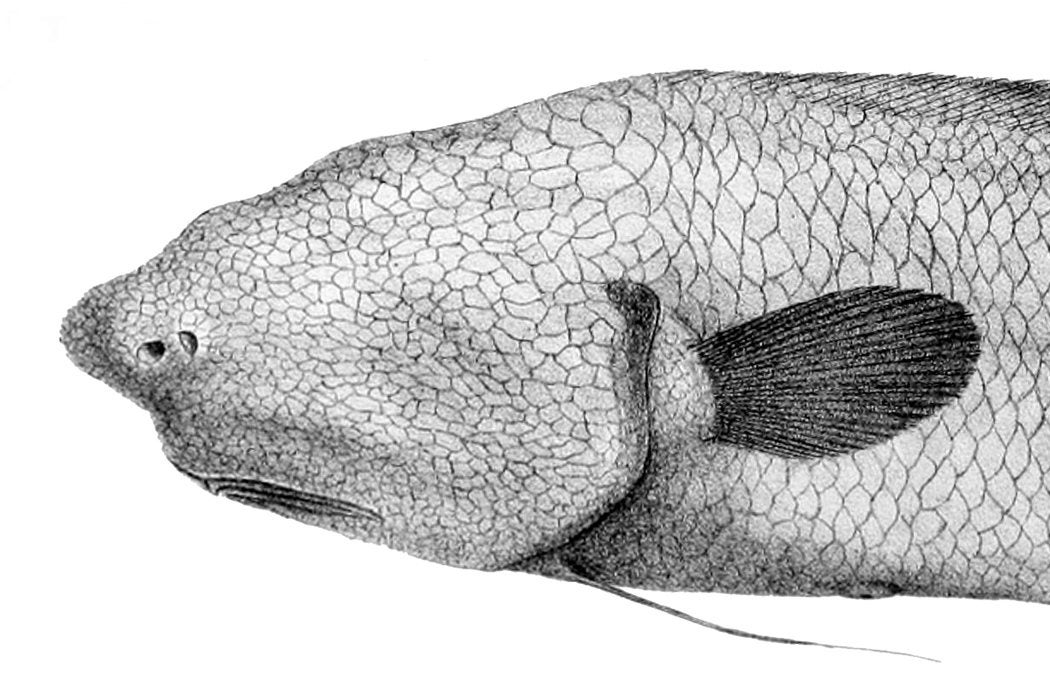From the “weird science” files: A research vessel off the coast of New South Wales in Eastern Australia hauled up a fish that did not seem to have a face. The fish, which was found in very deep water, is most likely a type of cusk eel, a widespread family of bony fishes that live near the sea floor. On closer inspection, the fish does have a kind of a face: the mouth is inferior, set back on the bottom of the head so it is not readily visible from a front view. The fish has eyes, but they are extremely small and the fish might well be functionally blind. Why and how does a fish lose its eyes? It’s a puzzle that has confounded biologists since Darwin himself.
Darwin attributed eye dimunition to “disuse,” and it is true that a wide variety of organisms (not just fish) seem to reduce or lose their eyes under conditions of permanent darkness, such as the deep sea or a cave. Vision can be useful to many deep sea animals, however, so eye reduction is not inevitable. So why does it sometimes happen? What is the harm in having unused eyes?
Without any obvious disadvantage, normal models of natural selection don’t apply. There are a few possible genetic pathways that could lead to the loss of functional eyes but overall there is no consensus on how or why eye loss occurs. That said, in a few cases hints of a genetic mechanism have been suggested. A study of Mexican cave fish compared the blind cave variety with the same type of fish from surface waters. The surface fish have eyes while their troglodytic cousins do not. The study revealed that both varieties begin to form an eye during development. In the cave variety, some of the genes that develop certain cells of the lens are partially or completely “turned off” at some point in development. The lens cells that have already formed undergo apoptosis, or programmed, natural destruction.
In most other respects, the sighted and cave varieties are identical. The tectum, part of the brain that helps control eye movements, is mostly normal in the blind cave fish. The parts of the visual tectum that directly receive optical inputs are reduced but otherwise its pretty similar in sighted fish. The degeneration seems to be mostly limited to the eye itself, not to the entire visual system.
When placed in a novel environment, first cave fish would swim into objects, but after a short time maneuver in the environment as though they could see. If the tectum looks mostly the same in fish with and without sight, the blind fish may still use the tectum, but for something other than sight. Possibly the fish is processing information that takes the place of sight in its brain, but exactly what is happening is speculative. One possibility is that the tectum in blind fish is used to interpret somatosensory (based on sense of touch or pressure) input, rather than visual input. But definitely the lack of eyes is not a handicap. For many creatures of the dark or the deep, eyes are understated and overrated.







